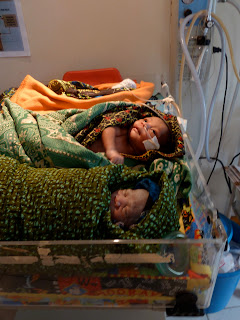I spent the morning in the antepartum clinic for high risk pregnancies.
Two women both had hemoglobin levels of 4.9 (approx equivalent of hematocrit of 15), a severity of anemia simply not seen in the U.S. There is a biochemical adaptation to chronic anemia that allows these women to function, though neonatal mortality is high. The following week one of these women presented with fetal demise. Malaria, malnutrition, parasites, or more likely a combination of the three.
In the afternoon a 17 year old who delivered 20week twins at home was brought in for retained placenta.
A curettage removed the placenta from what appeared to be a bicornuate (heart-shaped) uterus. Then another C/S for failure to progress, again working with one of the "clinical officers" (CO's or clinicians), the approximate equivalent of physician assistants who regularly perform C/Ss and other surgeries. Their technique and knowledge of anatomy were good, and they were interested in seeing my technique, unlike their counterparts in Mozambique. One newly graduated CO had not previously assisted on a C/S let alone perform one, so was excited to throw some stitches a tie a few knots.
And then the difficult re-repair of a third degree laceration (meaning the rectal sphincter muscles were torn) that occurred during a 17 year old's delivery at a satellite clinic. An initial repair had broken down so the patient was brought to Nkhoma.


